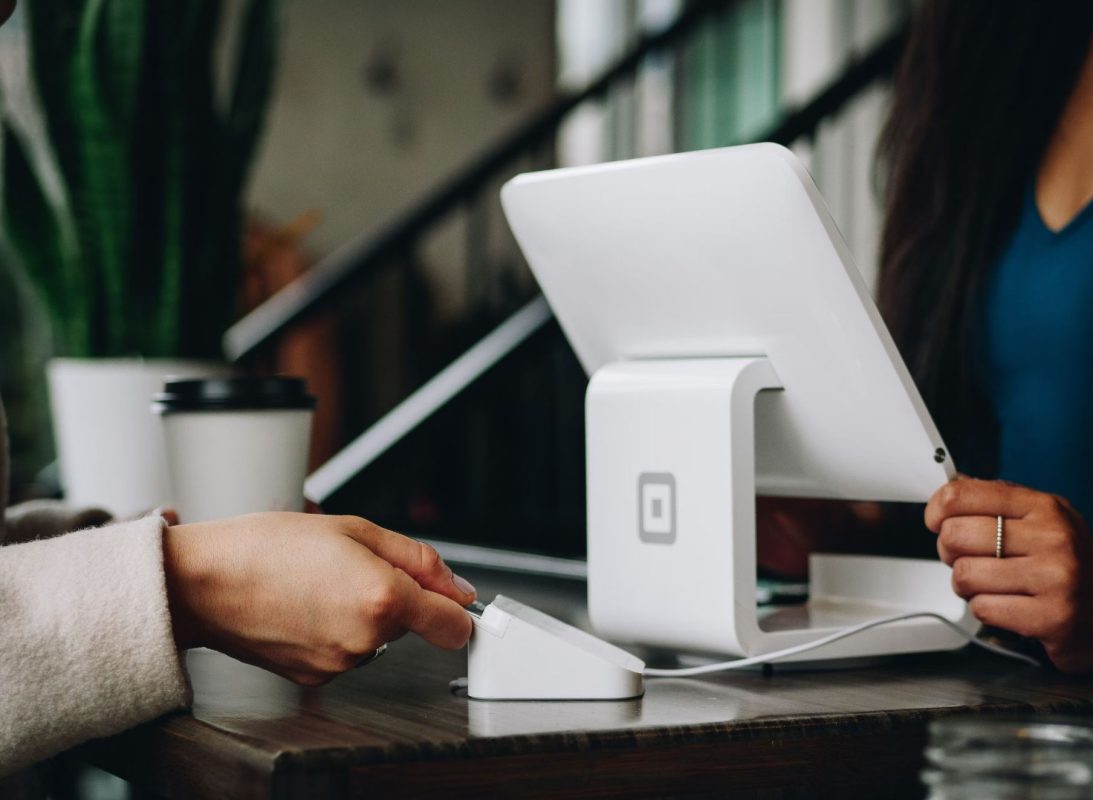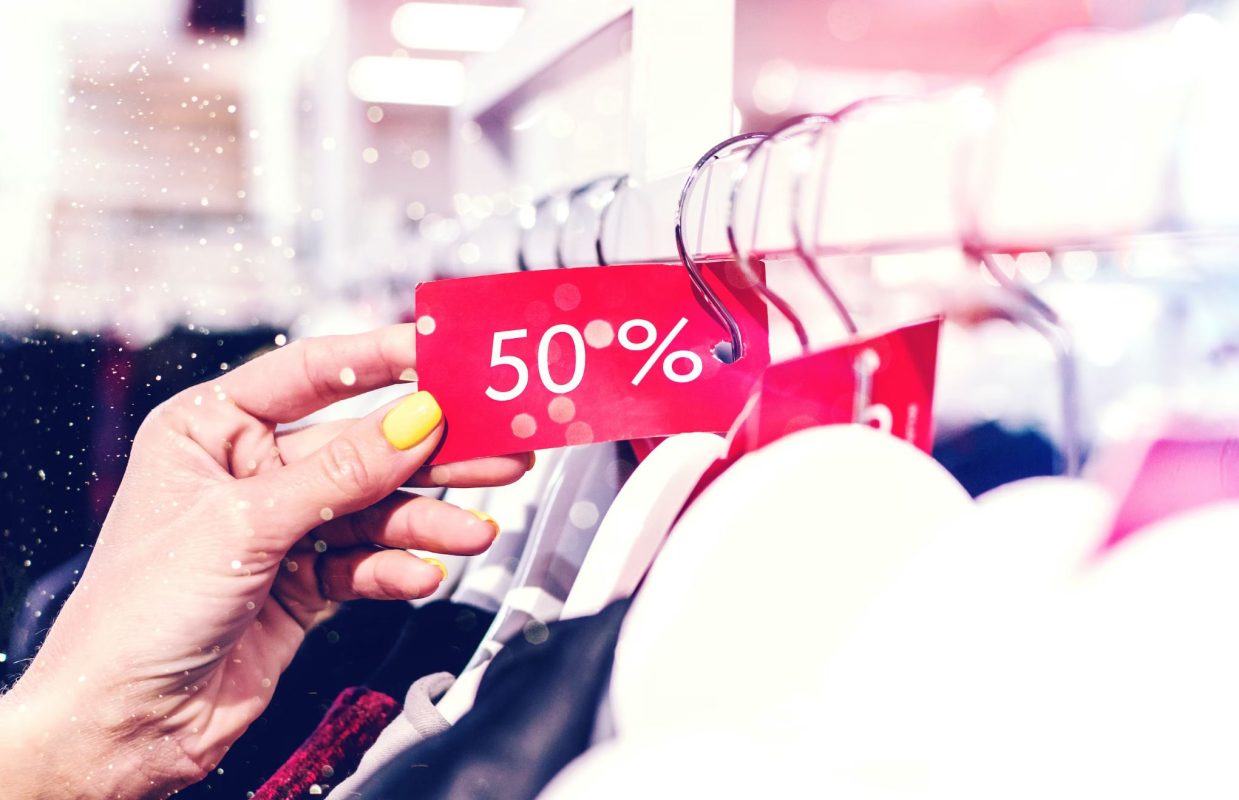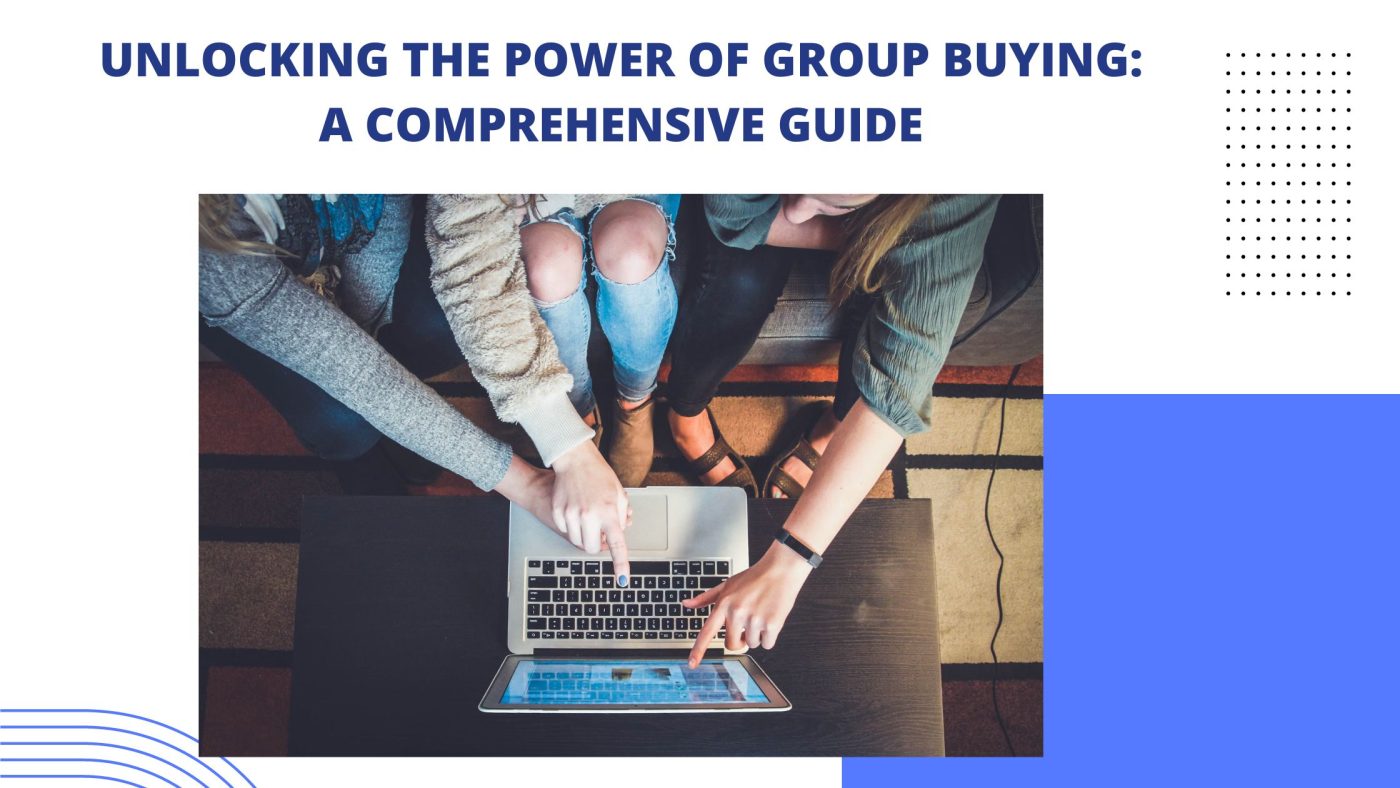Introduction
Welcome to the fascinating world of group buying, a concept that has revolutionized the way we shop and interact with e-commerce platforms. Imagine purchasing your favorite gadgets, fashion items, or even booking a vacation at a fraction of the cost. Sounds too good to be true? Well, that’s the magic of group buying.
The Concept of Group Buying
Group buying, also known as collective buying, is a unique purchasing strategy where people come together to buy the same product or service. By doing so, they leverage their collective purchasing power to negotiate better prices, exclusive deals, or added benefits that wouldn’t be available to an individual buyer. It’s like the age-old wisdom of “unity is strength,” but applied to the modern consumer landscape.
The Rise in Popularity
Over the past few years, group buying has gained significant traction, especially in the e-commerce sector. Thanks to the internet and social media, organizing a group purchase is easier than ever. Websites and apps dedicated to group buying have sprung up like mushrooms, offering a wide range of products and services that cater to diverse consumer needs. The COVID-19 pandemic has further accelerated this trend, as people look for smarter, cost-effective ways to shop from the comfort of their homes.
The Pros and Cons
While group buying offers a plethora of advantages such as discounted prices and bulk deals, it’s not without its drawbacks. For consumers, the risks include the possibility of scams, receiving subpar products, or dealing with complicated return policies. For sellers, there’s the challenge of managing inventory and the potential dilution of brand value. But don’t worry, we’ll delve deep into these aspects later in this blog.
What’s Ahead?
In this comprehensive guide, we will explore the ins and outs of group buying. From its historical roots and psychological triggers to its benefits and drawbacks, we’ve got it all covered. We’ll also look at some real-world case studies and provide actionable tips for both consumers and sellers looking to venture into group buying.
So, whether you’re a curious consumer wondering how to snag the best deals or a business owner contemplating a group buying strategy, this blog post is your one-stop resource.

Section 1: What is Group Buying?
This section provides an introductory overview of the concept of group buying. We’ll explore its definition, history, and various types, setting the stage for a deeper dive into the subject.
Subsection 1.1: Definition
Group buying, often referred to as collective buying, is a purchasing strategy where a group of individuals come together to buy a product or service in bulk. The primary objective is to leverage the collective bargaining power of the group to secure lower prices, exclusive deals, or additional perks that are generally not available to solo buyers.
The Mechanics
In a typical group buying scenario, a deal is activated only when a predetermined minimum number of buyers commit to the purchase. This is known as the “tipping point.” Once the tipping point is reached, the deal is “on,” and everyone in the group gets to benefit from the discounted price or added value. If the tipping point is not met within a specified timeframe, the deal is usually called off, and no one is charged.
Online vs. Offline Group Buying
While the concept of group buying is not new and has been practiced in various forms for centuries—think of farmers pooling resources to buy seeds or machinery—the advent of the internet has given it a modern twist. Online platforms have made it incredibly easy to organize group buys, offering a centralized place for consumers to find deals, join groups, and make purchases. Offline group buying still exists but is generally more localized and may require more effort in terms of organization and logistics.
Variants
Group buying is not a one-size-fits-all concept. It comes in various forms, including but not limited to:
- Flash Sales: Time-limited offers that require quick action from buyers.
- Bulk Purchases: Large quantities of a product are bought to distribute among group members.
- Subscription Models: Members commit to regular purchases to maintain a lower price point over time.
Each variant has its own set of rules, benefits, and drawbacks, which we will explore in later sections of this blog.
Subsection 1.2: History
The concept of group buying may seem like a modern phenomenon, especially with its current association with e-commerce platforms and social media. However, you might be surprised to learn that the roots of group buying can be traced back to much earlier times.
The Early Days
Long before the internet came into existence, communities often engaged in collective buying practices. For example, farmers would pool their resources to purchase seeds, fertilizers, or even machinery at discounted rates. Similarly, neighborhood communities would come together to buy household goods in bulk, thereby saving on individual costs. These early forms of group buying were primarily localized and relied heavily on interpersonal relationships and trust.
The Digital Revolution
The advent of the internet in the late 20th century dramatically changed the landscape of group buying. Websites started to offer platform-based group buying opportunities, making it easier for people to find deals and join groups without geographical limitations. One of the pioneers in this space was Groupon, founded in 2008, which popularized the concept of online group buying on a massive scale.
The Social Media Boost
Social media platforms like Facebook, Instagram, and Twitter have further amplified the reach and effectiveness of group buying. Specialized groups and pages dedicated to group buying deals have sprung up, allowing users to quickly join forces and take advantage of limited-time offers. The virality factor of social media also helps in reaching the tipping point faster, thereby activating more deals.
The Pandemic Effect
The COVID-19 pandemic has had a significant impact on consumer behavior, leading to a surge in online shopping. Group buying has been one of the beneficiaries of this trend, as people look for cost-effective ways to purchase goods and services while minimizing physical interactions. Many e-commerce platforms have introduced group buying features to capitalize on this surge in demand.
Today’s Landscape
Today, group buying is a multi-billion dollar industry, with numerous platforms and countless products and services available for collective purchase. From travel deals to electronics and from fashion to groceries, the sky’s the limit when it comes to what you can buy as a group.
Subsection 1.3: Types of Group Buying
Group buying is not a monolithic concept; it comes in various shapes and sizes, each with its own set of rules, benefits, and drawbacks. Understanding these different types can help both consumers and sellers make informed decisions. Below are some of the most common types of group buying:
Flash Sales
In a flash sale, a product or service is offered at a significantly reduced price for a limited period. The catch? A minimum number of people must commit to buying the product for the deal to be activated. Flash sales are often time-sensitive, requiring quick action from consumers.
Bulk Purchases
This is the most straightforward form of group buying. A group of consumers comes together to buy a product in large quantities, thereby benefiting from a bulk discount. This type is particularly popular for items like groceries, office supplies, or even furniture.
Subscription-Based Group Buying
In this model, members of a group commit to purchasing a product or service regularly (e.g., monthly or quarterly). The consistent demand allows sellers to offer products at a reduced rate. This type is common in sectors like fitness (gym memberships), beauty (skincare products), and food (meal kits).
Event-Based Group Buying
This type involves purchasing tickets for events like concerts, sports games, or theater shows as a group. The more tickets bought collectively, the greater the discount or added perks like VIP access or free merchandise.
Service Packages
Some service providers offer group buying options where consumers can purchase a package of services at a discounted rate. This is common in industries like travel, where people can buy vacation packages, or healthcare, where medical tests or treatments can be bought in a bundle.
Community-Sponsored
In this grassroots form of group buying, community members collectively sponsor a product, service, or even a local business. In return, they receive special discounts or exclusive offers. This type is often facilitated by community leaders or local organizations.
Digital Products and Online Courses
With the rise of online education and digital products, group buying has extended to this domain as well. Students or professionals can collectively purchase online courses, eBooks, or software licenses at discounted rates.

Section 2: The Psychology Behind Group Buying
In this section, we delve into the psychological factors that make group buying so compelling. From the Fear of Missing Out (FOMO) to the power of social proof, we’ll examine why people are drawn to group buying.
Subsection 2.1: Fear of Missing Out (FOMO)
One of the most potent psychological triggers that drive people to participate in group buying is the Fear of Missing Out, commonly known as FOMO. This phenomenon is not exclusive to group buying; it’s a pervasive aspect of human psychology that affects various areas of our lives. However, it plays a particularly significant role in the world of e-commerce and group buying.
What is FOMO?
FOMO is the uneasy feeling or anxiety that you’re missing out on something exciting, beneficial, or unique that others are experiencing. It’s the worry that if you don’t act quickly, you’ll lose out on an opportunity that may not come again.
How FOMO Drives Group Buying
In the context of group buying, FOMO manifests in several ways:
- Time Sensitivity: Many group buying deals are time-limited, creating a sense of urgency. The ticking clock adds pressure to make a quick decision, lest you miss out on a fantastic deal.
- Limited Availability: Often, group buying deals have a limited number of slots or products available. The scarcity creates a rush to be one of the lucky few to snag the deal.
- Social Sharing: Seeing friends or family members share a group buying deal on social media can intensify FOMO. The thought that people in your social circle are taking advantage of a deal can push you to join in.
- Exclusive Offers: The allure of getting something exclusive or extra—be it a free product, an extended warranty, or VIP access—can make the deal seem too good to pass up.
The Double-Edged Sword
While FOMO can be a powerful motivator, it’s essential to approach it with caution. The urgency and social pressure can sometimes lead to impulsive buying decisions that you may later regret. Always weigh the pros and cons and consider whether the deal genuinely offers value or if FOMO is clouding your judgment.
Subsection 2.2: Social Proof
Another psychological factor that plays a significant role in the success of group buying is social proof. This concept refers to the tendency of people to conform to the actions of others, particularly when they are uncertain about what to do. In simpler terms, we often look to others to guide our behavior, especially when we’re unsure.
The Role of Social Proof in Group Buying
In the world of group buying, social proof manifests in various ways:
- User Reviews and Ratings: Before committing to a group buy, many people look for reviews and ratings from those who have already made the purchase. Positive feedback can significantly influence potential buyers.
- Testimonials: Some group buying platforms feature testimonials from satisfied customers. These endorsements serve as a form of social proof that the deal is worth joining.
- Social Media Shares and Likes: A deal that has been widely shared or liked on social media platforms gains credibility. The more people talking about it, the more legitimate and attractive it appears.
- Friend and Family Recommendations: Personal recommendations from friends and family carry a lot of weight. If someone in your social circle vouches for a group buying deal, you’re more likely to participate.
- Real-Time Updates: Some platforms show real-time statistics on how many people have joined a particular deal, adding a layer of social proof. The thinking goes, “If so many people are in, it must be good.”
Leveraging Social Proof as a Seller
For sellers, understanding the power of social proof can help in designing more effective group buying campaigns. Incorporating elements like customer testimonials, star ratings, and social sharing buttons can enhance the deal’s credibility and attract more participants.
The Caveats
While social proof is a powerful influencer, it’s not foolproof. Consumers should be cautious and do their own research. Sometimes, the crowd can be wrong, or the deal might not be as good as it seems based on popular opinion.
Subsection 2.3: The Thrill of the Deal
Last but not least in our exploration of the psychology behind group buying is the sheer excitement and satisfaction derived from snagging a great deal. This “thrill of the deal” is a powerful motivator that shouldn’t be underestimated, both from the consumer’s and the seller’s perspective.
The Dopamine Effect
When we secure a fantastic deal, our brain releases dopamine, the “feel-good” neurotransmitter. This creates a sense of pleasure and reward, making us more likely to engage in the behavior again. In the context of group buying, this means that a successful purchase can lead to repeat participation in future deals.
The Gamification Element
Many group buying platforms incorporate elements of gamification, such as countdown timers, progress bars showing how close the group is to reaching the tipping point, and even badges or rewards for frequent participants. These elements add an extra layer of excitement and engagement, making the process feel like a game that you want to win.
Social Sharing and Bragging Rights
Part of the thrill comes from sharing your “win” with others. Whether it’s posting about your latest group buy on social media or telling friends and family about the incredible deal you snagged, the social aspect amplifies the excitement and satisfaction.
Seller Benefits
For sellers, understanding the psychology of the “thrill of the deal” can be invaluable. Crafting your group buying offers in a way that maximizes this thrill can lead to higher engagement, more shares, and ultimately, more sales. It’s not just about offering a discount; it’s about creating an experience that consumers find rewarding and exciting.
A Word of Caution
While the thrill of the deal is exhilarating, it can also lead to impulsive buying decisions. Consumers should be mindful of this and evaluate whether the deal aligns with their needs and budget. The thrill is short-lived, but the consequences of a poor buying decision can be long-lasting.

Section 3: Benefits of Group Buying
This section focuses on the myriad benefits that group buying offers to both consumers and sellers. From cost savings to community engagement, we’ll explore why group buying is an increasingly popular choice for savvy shoppers and businesses alike.
Subsection 3.1: For Consumers
Group buying offers a plethora of advantages for consumers, making it an increasingly popular choice for savvy shoppers. Let’s delve into some of the key benefits that you, as a consumer, can enjoy when participating in group buying.
Cost Savings
The most obvious benefit is the cost savings. By pooling resources with other buyers, you can secure products or services at a fraction of the regular price. Whether it’s a high-end gadget, a luxury vacation, or everyday groceries, the discounts can be substantial.
Access to Exclusive Deals
Many group buying platforms offer deals that are not available through other channels. These can range from limited-edition products to exclusive experiences, giving you access to offers that you wouldn’t find elsewhere.
Convenience
Online group buying platforms make the process incredibly convenient. You can join a group, participate in a deal, and make your purchase, all from the comfort of your home. Plus, many platforms offer mobile apps, so you can snag deals on the go.
Community Engagement
Group buying often fosters a sense of community among participants. You’re all there for the same reason—to get a great deal—and that shared goal can lead to interactions, friendships, and even long-term relationships with like-minded individuals.
Product Discovery
Participating in group buying can introduce you to products or services you might not have considered otherwise. It’s a great way to discover new brands, try out new experiences, and broaden your horizons.
Risk Mitigation
When a large number of people participate in a deal, it often serves as a form of validation for the product or service’s quality. While this isn’t foolproof, it does provide some level of assurance that you’re making a wise purchase.
Eco-Friendly
Last but not least, group buying can be an eco-friendly option. Bulk purchases reduce the amount of packaging needed and can also minimize shipping emissions if buyers are located close to each other.
Subsection 3.2: For Sellers
While consumers are the more visible beneficiaries of group buying, sellers also stand to gain a lot from this business model. If you’re a business owner or marketer considering launching a group buying campaign, here are some compelling benefits you should know about.
Increased Sales Volume
The most immediate benefit is the potential for increased sales. By offering a product or service at a discounted rate to a group, you can move larger quantities in a shorter period, thereby boosting your overall sales volume.
Customer Acquisition
Group buying is an excellent tool for customer acquisition. People who might not have otherwise considered your product or service are more likely to give it a try when enticed by a group discount. Once they’ve had a positive experience, they’re likely to return, even without a discount.
Inventory Management
If you have excess inventory that you need to move quickly, a group buying campaign can be an effective solution. By offering a substantial discount to a group, you can clear out inventory faster than through traditional sales channels.
Brand Exposure
The viral nature of group buying can provide significant brand exposure. Participants are likely to share the deal with friends, family, and social networks, thereby increasing your brand’s visibility without additional marketing spend.
Market Testing
Launching a new product? Use group buying as a market testing tool. The feedback and sales data from a group buying campaign can provide valuable insights into consumer preferences, price sensitivity, and overall market demand.
Community Building
Group buying can foster a sense of community among your customers. This can be particularly beneficial for niche products or services, where creating a loyal community can lead to long-term success.
Data Collection
Group buying platforms often require users to register or provide some form of contact information. This data can be invaluable for future marketing campaigns, allowing you to target customers with personalized offers.
Lower Marketing Costs
Finally, the cost of acquiring a customer through a group buying campaign is often lower than other marketing channels. The group itself does much of the promotional work by sharing the deal, thereby reducing your marketing expenses.

Section 4: Drawbacks and Risks
While group buying offers numerous benefits, it’s essential to be aware of the potential drawbacks and risks involved. In this section, we’ll first focus on the challenges and pitfalls that consumers may encounter.
Subsection 4.1: For Consumers
Quality Concerns
One of the most significant risks for consumers is the quality of the product or service. Because the focus is often on the discounted price, some sellers may compromise on quality to make the deal more attractive. Always read reviews and do your research before committing to a purchase.
Scams and Fraud
Unfortunately, the popularity of group buying has also attracted scammers. Fake deals, counterfeit products, and fraudulent platforms are some of the risks you may encounter. Be cautious and stick to reputable platforms and sellers.
Complicated Return Policies
Group buying often involves unique terms and conditions, including stricter return policies. Make sure to read the fine print and understand what you’re committing to, especially if the product is expensive or non-refundable.
Peer Pressure
The social dynamics of group buying can sometimes lead to peer pressure. You might end up joining a deal not because you genuinely need or want the product, but because you don’t want to feel left out.
Impulse Buying
The excitement and time-sensitive nature of group buying deals can lead to impulse purchases. You might find yourself buying things you don’t need, simply because the deal seemed too good to pass up.
Shipping and Logistics
If the group buying deal involves physical products, shipping can be a concern. Delays, lost packages, and the environmental impact of shipping are factors to consider.
Limited Choice
Group buying deals are often limited to specific products or services, which means you may have to compromise on your preferences for the sake of the discount.
Hidden Costs
Some deals may have hidden costs like shipping fees, service charges, or mandatory add-ons that are not immediately apparent. Always calculate the total cost to assess whether the deal is genuinely beneficial.
Subsection 4.2: For Sellers
While group buying can be a lucrative strategy for sellers, it’s not without its challenges and risks. If you’re considering implementing a group buying model for your business, here are some potential drawbacks to keep in mind.
Brand Dilution
Offering your products or services at a significantly reduced price can sometimes dilute your brand’s perceived value. Customers may begin to associate your brand with “cheap” or “discount,” which could harm your long-term positioning.
Overstocking Issues
The allure of increased sales volume can lead sellers to overstock products, anticipating high demand. If the group buying deal doesn’t attract enough participants, you could be left with excess inventory.
Profit Margin Pressure
While group buying can increase sales volume, the discounted prices can also squeeze profit margins. It’s crucial to carefully calculate the financial implications to ensure that the campaign is still profitable.
Customer Loyalty Concerns
Customers attracted by deep discounts may not necessarily become loyal customers. They might just be “deal hunters” who move on to the next discount, never to return at regular prices.
Operational Strain
Fulfilling a large number of orders in a short period can put a strain on your operations. From inventory management to shipping logistics, make sure your business is equipped to handle the increased workload.
Negative Reviews
If customers feel that the group buying experience was unsatisfactory, whether due to product quality or fulfillment issues, they are likely to leave negative reviews. This can harm your brand’s reputation and deter future customers.
Complexity in Terms and Conditions
Group buying deals often come with complex terms and conditions, such as minimum participant numbers or specific redemption windows. Managing these conditions can add an extra layer of complexity to your sales process.
Legal Risks
Depending on your jurisdiction, there may be specific laws and regulations governing group buying and discount sales. Failure to comply can result in legal repercussions, including fines and reputational damage.

Section 5: Case Studies
To better understand the impact and effectiveness of group buying, let’s delve into some real-world case studies. These examples showcase how both consumers and sellers can benefit from group buying, while also highlighting some of the challenges involved.
Case Study 1: Groupon’s Rise to Fame
Overview
Groupon, founded in 2008, is one of the pioneers in the online group buying industry. The platform offers a wide range of products and services at discounted prices, provided that a minimum number of consumers commit to the purchase.
Success Factors
- Broad Product Range: From spa treatments to electronics, Groupon’s diverse offerings attracted a wide consumer base.
- User-Friendly Platform: An easy-to-navigate website and mobile app made it convenient for consumers to browse deals.
- Local Partnerships: Groupon successfully partnered with local businesses, offering them a platform to attract new customers.
Challenges
- Brand Dilution: While Groupon attracted a large number of deal-seekers, it struggled with the perception of being a “discount brand.”
- Vendor Relations: Some businesses found that Groupon customers rarely returned for full-priced purchases, affecting long-term profitability.
Case Study 2: Xiaomi’s Flash Sales
Overview
Xiaomi, a Chinese electronics company, utilized flash sales as a form of group buying to sell smartphones. These sales were time-limited and offered phones at a significantly reduced price.
Success Factors
- High-Quality Products: Xiaomi’s smartphones were well-reviewed, adding credibility to the flash sales.
- Limited Availability: The scarcity factor created urgency, driving quick consumer action.
- Social Media Buzz: Xiaomi effectively used social media to create hype before each flash sale.
Challenges
- Operational Strain: The high demand during flash sales put a strain on Xiaomi’s supply chain.
- Customer Frustration: Due to limited stock, many interested buyers missed out, leading to customer dissatisfaction.
Case Study 3: Community-Sponsored CSA Farms
Overview
Community-Sponsored Agriculture (CSA) is a grassroots form of group buying where community members sponsor local farms in exchange for a share of the harvest.
Success Factors
- Local Support: The model fostered strong community relationships and supported local agriculture.
- Quality Produce: Members received fresh, organic produce, often at a lower cost than supermarkets.
- Environmental Benefits: The local focus reduced transportation emissions and encouraged sustainable farming practices.
Challenges
- Seasonal Limitations: The model was dependent on seasonal produce, limiting variety.
- Commitment Requirements: Members had to commit for an entire season, which might not suit all consumers.
Section 6: Best Practices and Tips
To maximize the benefits and minimize the risks of group buying, it’s essential to follow some best practices. In this section, we’ll start by focusing on tips for consumers.
Subsection 6.1: For Consumers
Do Your Research
Before jumping into a group buying deal, make sure to research the product, service, and seller. Look for reviews, ratings, and any red flags that might indicate a scam or poor quality.
Read the Fine Print
Always read the terms and conditions carefully. Understand the return policy, warranty, and any additional fees that may apply. This will help you make an informed decision and avoid unpleasant surprises later.
Set a Budget
It’s easy to get carried away with the excitement of a great deal. To avoid impulse buying, set a budget for yourself and stick to it.
Use Reputable Platforms
Stick to well-known and reputable group buying platforms. These platforms are more likely to offer genuine deals and have secure payment options.
Check the Tipping Point
Before joining a deal, check the tipping point—the minimum number of participants required for the deal to go through. Make sure it’s a realistic number to avoid disappointment.
Be Time-Aware
Many group buying deals are time-sensitive. Make sure you’re aware of the time frame and are prepared to make a quick decision if necessary.
Share Wisely
If you find a deal you’re excited about, sharing it with friends and family can help reach the tipping point faster. However, be cautious about sharing deals from unknown or unverified sources.
Assess the Total Cost
Sometimes a deal may seem great on the surface, but additional costs like shipping fees can add up. Always calculate the total cost to determine if it’s truly a good deal.
Subsection 6.2: For Sellers
For sellers looking to capitalize on the group buying trend, implementing best practices can make the difference between a successful campaign and a failed one. Here are some tips to help you get the most out of your group buying initiatives.
Know Your Margins
Before launching a group buying deal, it’s crucial to understand your profit margins. Offering a discount is great for attracting customers, but it shouldn’t come at the expense of profitability.
Choose the Right Platform
Select a group buying platform that aligns with your target audience and product or service type. Different platforms cater to different demographics and interests, so choose wisely.
Set Clear Terms and Conditions
Make sure the terms and conditions of your deal are clear and transparent. This includes the minimum number of participants required, the time frame of the deal, and any additional fees or charges.
Limit Availability
Creating a sense of scarcity can drive urgency and increase participation. Limit the number of products or services available in the deal to create a sense of exclusivity.
Monitor and Adapt
Keep a close eye on how your deal is performing. Be prepared to make adjustments, whether it’s extending the time frame or adding extra incentives to reach the tipping point.
Leverage Social Proof
Use testimonials, ratings, and reviews to add credibility to your deal. Social proof can significantly influence potential buyers and increase participation.
Plan for Operational Demands
Be prepared for a surge in demand. Make sure your inventory, shipping, and customer service are all equipped to handle the increased workload.
Post-Deal Engagement
Don’t let the relationship end once the deal is over. Use the customer data collected to engage with participants through targeted marketing campaigns, encouraging repeat business.

Conclusion
Group buying is a fascinating phenomenon that has taken the e-commerce world by storm. With its roots in traditional collective purchasing, this modern incarnation offers a plethora of opportunities and challenges for both consumers and sellers. From significant discounts and exclusive deals to the psychological triggers like FOMO and social proof, the landscape is complex but incredibly rewarding for those who navigate it wisely.
For consumers, the key to a successful group buying experience lies in doing thorough research, understanding the terms, and being mindful of the psychological factors at play. Sellers, on the other hand, need to focus on offering genuine value while maintaining profitability and operational efficiency.
We’ve explored the history, types, psychological factors, benefits, drawbacks, and best practices associated with group buying. We’ve also delved into real-world case studies to understand the practical implications of this trend. Whether you’re a consumer looking for the next great deal or a seller aiming to boost your sales, understanding the intricacies of group buying can equip you with the tools to make the most of this exciting opportunity.
So the next time you come across a group buying deal that catches your eye or consider launching a group buying campaign for your business, you’ll be well-prepared to make an informed decision. Happy group buying!
Additional Resources
For those looking to dive deeper into the world of group buying, here are some additional resources that can further enrich your understanding and help you make the most of your group buying experiences.
For Consumers:
- “The Psychology of Group Buying” – A book that delves into the psychological factors that influence group buying behavior.
- “Top 10 Group Buying Platforms of 2023” – A comprehensive review and ranking of the most popular group buying platforms available today.
- Budgeting Apps – Tools like Mint and YNAB can help you set and stick to a budget, ensuring you make wise group buying decisions.
- Consumer Protection Websites – Websites like the Better Business Bureau offer insights into the credibility of various sellers and platforms.
For Sellers:
- “Group Buying for Business: A Comprehensive Guide” – This eBook offers step-by-step instructions for setting up and running a successful group buying campaign.
- Webinars and Online Courses – Platforms like Udemy and Coursera offer courses on e-commerce strategies, including group buying.
- Inventory Management Software – Tools like QuickBooks Commerce can help you manage the increased demand that comes with group buying.
- Legal Consultation Services – Before launching a group buying campaign, consult with legal experts to ensure you’re complying with all regulations.
General:
- Podcasts and Blogs – There are numerous podcasts and blogs dedicated to the subject of group buying, offering tips, reviews, and industry news.
- Social Media Groups – Joining group buying-focused social media groups can provide real-time updates, reviews, and community advice.
- Industry Reports – For those interested in the business aspect, various industry reports offer in-depth analysis and future trends in group buying.

